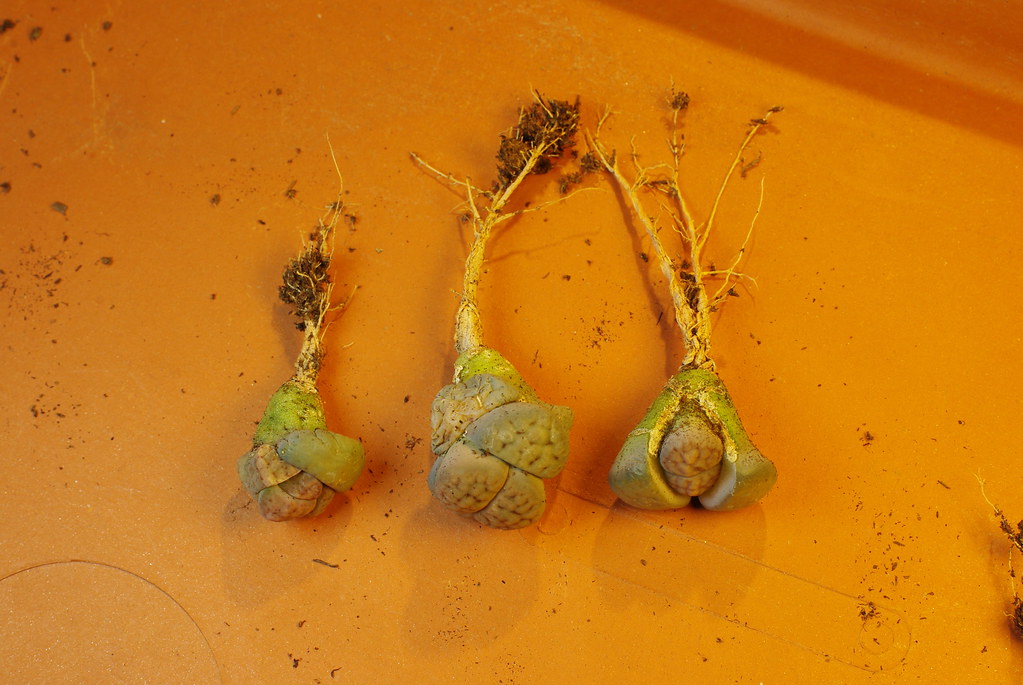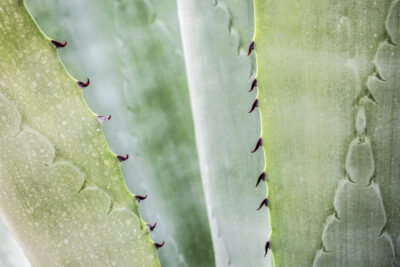
Reviving an Overwatered Succulent: Tips to Save Your Plant

Overwatering is one of the most common mistakes made by plant owners, and succulents are particularly susceptible to this problem. Succulents are known for their ability to store water in their leaves and stems, allowing them to survive in dry and arid conditions. However, when they are overwatered, their roots become saturated, leading to root rot and eventually the death of the plant. If you've accidentally overwatered your succulent and it's showing signs of distress, don't panic. With the right care and attention, it is possible to revive your overwatered succulent and bring it back to health.
We will provide you with tips and techniques to save an overwatered succulent. We will discuss the signs of overwatering to look out for, as well as the steps you should take to rescue your plant. We will cover topics such as proper watering techniques, adjusting the soil and drainage, and providing the right amount of light and temperature. By following these guidelines, you can give your overwatered succulent a fighting chance at survival and ensure that it thrives in the future.
- Adjust watering schedule to allow soil to dry out between waterings
- Improve drainage to prevent waterlogging
- Remove the overwatered succulent from its pot
- Check drainage holes and ensure proper water flow
- Remove the plant from its pot and inspect roots for rot
- Trim off any rotting or damaged roots
- Repot the succulent in fresh, well-draining soil
- Provide adequate sunlight for the plant, but avoid direct, intense sunlight
- Gradually reintroduce watering once the soil has completely dried out
- Use a moisture meter to monitor soil moisture levels
- Consider using a rooting hormone to stimulate new root growth
- Avoid overfertilizing the succulent during the recovery process
- Be patient, as it may take time for the plant to recover
- Frequently Asked Questions
Adjust watering schedule to allow soil to dry out between waterings
Overwatering can be a common mistake made by succulent owners, leading to root rot and ultimately the death of the plant. To save your overwatered succulent, one of the first steps you need to take is to adjust your watering schedule.
It is crucial to allow the soil to dry out between waterings. Succulents are adapted to survive in arid conditions, storing water in their leaves and stems. When the soil is consistently wet, it deprives the roots of oxygen and can lead to root rot.
To prevent overwatering, check the moisture level of the soil before watering. Stick your finger into the soil about an inch deep – if it feels dry, it's time to water. If it still feels moist, hold off on watering until the soil has dried out.
Remember, it's better to underwater than to overwater your succulent. These plants are resilient and can tolerate periods of drought, but they cannot survive in waterlogged conditions.
Improve drainage to prevent waterlogging
Another crucial aspect to revive an overwatered succulent is to improve the drainage of the pot or container it is planted in. Poor drainage is a common cause of overwatering, as excess water gets trapped in the soil.
 Succulent Care: Pruning Damaged Leaves
Succulent Care: Pruning Damaged LeavesEnsure that your succulent is planted in a well-draining potting mix. You can create a suitable mix by combining regular potting soil with perlite or coarse sand. These additives help to improve the drainage of the soil, preventing waterlogging.
Additionally, check if the pot has drainage holes at the bottom. If not, consider repotting your succulent into a container with adequate drainage. This will allow excess water to escape and prevent it from being trapped around the roots.
Remove the overwatered succulent from its pot
To assess the damage caused by overwatering and give your succulent a chance to recover, you'll need to carefully remove it from its pot.
Gently tap the sides of the pot to loosen the soil and roots. Once loosened, carefully lift the plant out of the pot, taking care not to damage the roots any further. You may need to use a small tool, like a wooden stick or a spoon, to help separate the plant from the pot.
Once you have removed the succulent from its pot, gently shake off any excess soil from the roots. This will help you examine the condition of the roots and identify any signs of rot or damage.
Trim off any mushy or rotting roots using a clean pair of scissors or pruning shears. Cutting away the damaged roots will promote healthy regrowth and prevent further decay.
Check drainage holes and ensure proper water flow
One of the main reasons succulents suffer from overwatering is poor drainage. When the excess water is unable to escape through the drainage holes, it leads to waterlogged soil, which can cause root rot and other issues. Therefore, it is crucial to check the drainage holes of your succulent's pot and make sure that they are not clogged or blocked.
 The Ultimate Guide to Succulent Care: Everything You Need to Know
The Ultimate Guide to Succulent Care: Everything You Need to KnowIf you find any obstructions, clear them out to ensure proper water flow. This way, the excess water can easily drain out, preventing your succulent from sitting in water for too long.
Adjust your watering routine
After addressing the drainage issue, it is essential to adjust your watering routine to avoid overwatering your succulent in the future. Succulents are adapted to survive in arid conditions, so they don't require frequent watering like other houseplants.
Instead of following a fixed watering schedule, it is better to water your succulent based on its needs. Before watering, always check the moisture level of the soil by sticking your finger about an inch deep into the soil. If it feels dry, it's time to water. However, if it still feels moist, it's best to hold off on watering.
Remember, it's better to underwater your succulent than to overwater it. Succulents can tolerate drought-like conditions, but they are not resilient to excessive moisture.
Repot your succulent
If your succulent has suffered severe damage due to overwatering, repotting it can be a potential solution. Start by carefully removing the succulent from its current pot. Gently shake off excess soil from the roots and inspect them for any signs of rot.
If you notice any black, mushy roots, trim them off with clean scissors or pruning shears. Once the roots are pruned, let them dry for a day or two to allow any wounds to heal and prevent the risk of infection.
Next, choose a new pot that has good drainage and is slightly larger than the previous one. Fill the pot with a well-draining succulent or cactus potting mix, leaving enough space for the roots. Place the succulent in the new pot, making sure the roots are spread out evenly. Gently backfill the potting mix around the roots, ensuring they are adequately covered.
 Preventing Succulent Stem Growth: Tips for Compact, Healthy Plants
Preventing Succulent Stem Growth: Tips for Compact, Healthy PlantsAfter repotting, refrain from watering your succulent for a few days to allow it to adjust and recover from the stress of repotting.
Provide proper sunlight and airflow
Succulents thrive in bright, indirect sunlight. After overwatering, it is crucial to provide your succulent with adequate sunlight to promote healthy growth and prevent further moisture-related issues.
Place your succulent in a well-lit area, preferably near a window that receives indirect sunlight. Avoid placing it in direct sunlight, especially during the hottest parts of the day, as it can cause sunburn and damage the plant.
In addition to sunlight, airflow is also essential for succulents. Ensure that the area around your succulent is well-ventilated to prevent excess humidity, which can contribute to overwatering. Good airflow helps the soil dry out faster between waterings, reducing the risk of root rot.
Monitor and adjust care as needed
Even after implementing the above tips, it is important to monitor your succulent closely and adjust its care as needed. Each succulent is unique, and factors such as temperature, humidity, and the type of potting mix used can affect their watering requirements.
Regularly check the moisture level of the soil and observe your succulent for any signs of distress. If you notice wilting, yellowing leaves, or soft and mushy stems, it may indicate overwatering. In such cases, reduce watering frequency and adjust the care accordingly.
By closely monitoring and adapting your care routine based on your succulent's needs, you can help it recover from overwatering and thrive once again.
 Revive Your Dying Succulent with These Essential Tips
Revive Your Dying Succulent with These Essential TipsRemove the plant from its pot and inspect roots for rot
One of the first steps to reviving an overwatered succulent is to carefully remove the plant from its pot. Gently loosen the soil around the roots and carefully lift the plant out. Once you have the plant out of the pot, inspect the roots for signs of rot.
If the roots appear mushy, brown, or have a foul smell, it is a clear indication of root rot. This occurs when the roots are consistently overwatered, leading to a lack of oxygen and the growth of harmful bacteria or fungi. In severe cases, the roots may appear black and completely mushy.
TIP: Healthy roots should be firm, white, and plump. If you spot any signs of rot, it is crucial to take immediate action to save your succulent.
Trim off any rotting or damaged roots
If you notice that your succulent has been overwatered and is showing signs of rot or damage, it's important to act quickly to save your plant. One of the first steps you should take is to trim off any rotting or damaged roots.
Here's how you can do it:
- Gently remove the succulent from its pot, being careful not to cause further damage to the plant.
- Inspect the roots and identify any portions that appear mushy, blackened, or slimy. These are the parts that need to be removed.
- Using a clean pair of shears or scissors, carefully trim off the affected roots, making sure to cut above the damaged area.
- After trimming, allow the roots to dry for a couple of days before replanting the succulent.
Trimming off rotting or damaged roots helps prevent the spread of infection and gives your succulent a chance to recover. Remember to be gentle during the process to avoid causing additional harm to the plant.
 Causes of Brown and Falling Bottom Leaves in Succulents
Causes of Brown and Falling Bottom Leaves in SucculentsRepot the succulent in fresh, well-draining soil
One of the first steps to revive an overwatered succulent is to repot it in fresh, well-draining soil. Overwatering can lead to the soil becoming compacted and waterlogged, which can suffocate the roots and cause root rot. By repotting the succulent, you can provide it with a fresh start and ensure proper drainage for its roots.
When selecting a new potting mix, opt for a well-draining soil specifically formulated for succulents or cacti. These types of soils are typically composed of a mixture of organic matter, like peat moss or coconut coir, and inorganic matter, such as perlite or pumice. The organic matter helps retain some moisture, while the inorganic matter promotes drainage.
To repot the succulent, carefully remove it from its current pot, gently loosening the roots if they are compacted or tangled. Shake off any excess soil and examine the roots for any signs of rot or damage. Trim off any brown or mushy roots using a clean, sharp pair of scissors or pruning shears.
Next, select a new pot that is slightly larger than the previous one to allow room for growth. Place a layer of fresh soil at the bottom of the pot, ensuring it covers the drainage holes to prevent soil from escaping. Carefully position the succulent in the pot, making sure the roots are spread out evenly and facing downwards.
Fill the remaining space around the roots with the fresh soil, gently pressing it down to secure the plant in place. Avoid burying the succulent too deep as this can lead to stem rot. Leave a small gap between the soil surface and the rim of the pot to prevent water from overflowing during watering.
After repotting, allow the succulent to settle in its new home for a few days before resuming a regular watering schedule. This will give the roots time to adjust and recover from any damage caused by overwatering.
 Using Miracle-Gro on Succulents: Is it Safe or Harmful?
Using Miracle-Gro on Succulents: Is it Safe or Harmful?Remember, proper drainage is key to prevent future overwatering. Ensure that the pot has drainage holes and consider using a shallow saucer underneath to catch any excess water that drains out. Additionally, adjust your watering routine to match the specific needs of your succulent, allowing the soil to dry out between waterings.
By repotting your overwatered succulent in fresh, well-draining soil, you can give it a second chance at thriving. Remember to monitor its watering needs and provide the necessary conditions for its growth, and you'll soon see your succulent bounce back to its former healthy state.
Provide adequate sunlight for the plant, but avoid direct, intense sunlight
When it comes to reviving an overwatered succulent, sunlight plays a crucial role. Succulents thrive in bright conditions, but direct, intense sunlight can further stress an already weakened plant. So, it's important to strike a balance.
Find a spot for your succulent where it can receive adequate sunlight. A sunny window or a spot in your garden with partial shade is ideal. If you notice that your succulent is turning yellow or its leaves are becoming mushy, it may be an indication that it is receiving too much sunlight. In this case, move the plant to a location with slightly less direct light.
On the other hand, if your succulent is stretching or leaning towards the light, it may be a sign that it is not getting enough sunlight. In such cases, gradually introduce it to more light by placing it in a brighter location for a few hours each day until it adjusts.
Remember, each succulent has different light requirements, so it's important to research the specific needs of your plant. Some succulents can tolerate more shade, while others need more sunlight to thrive.
 Can Succulents Survive the Cold Winter Months? Tips for Winter Care
Can Succulents Survive the Cold Winter Months? Tips for Winter CareOverall, providing adequate sunlight while avoiding direct, intense sunlight will give your overwatered succulent the best chance at recovery.
Gradually reintroduce watering once the soil has completely dried out
Overwatering is a common mistake many succulent owners make, but don't worry, there's still hope for your overwatered plant! To revive your succulent, it's crucial to gradually reintroduce watering once the soil has completely dried out.
When succulents are overwatered, their roots become saturated and suffocate, leading to root rot. This can cause the plant to wilt, turn yellow, or even die if not addressed promptly. So, follow these tips to save your precious succulent:
1. Assess the damage
Before taking any action, carefully examine your succulent to determine the extent of the damage. Check the leaves, stem, and roots for any signs of rot or decay. If you notice any mushy or blackened areas, it's an indication of overwatering.
Note: If the rot has spread extensively and the plant appears beyond repair, it might be best to propagate healthy parts of the succulent and start afresh.
2. Remove the plant from its pot
Gently remove the overwatered succulent from its pot, being cautious not to damage the roots further. Shake off any excess soil and carefully inspect the roots for signs of root rot. Trim away any soft or mushy roots using sterilized scissors or pruning shears.
 The Lifespan of Indoor Succulents: How Long Do They Typically Live?
The Lifespan of Indoor Succulents: How Long Do They Typically Live?3. Let the soil dry out completely
Place the succulent in a dry and well-ventilated area, away from direct sunlight. Allow the soil to dry out completely before proceeding. This process may take several days to a week, depending on the plant and the moisture level in the environment.
4. Adjust watering habits
Once the soil is completely dry, it's time to adjust your watering habits. Succulents thrive in well-draining soil, so make sure your pot has drainage holes. Water the plant sparingly, only when the top inch of soil feels dry to the touch.
Tip: Consider using a moisture meter to accurately monitor the moisture levels in the soil.
5. Provide adequate sunlight
Succulents need plenty of sunlight to thrive, but after overwatering, it's important to be cautious. Gradually introduce your succulent to sunlight, starting with indirect light and gradually increasing the exposure. Avoid placing it in direct sunlight immediately, as it can cause sunburn on the vulnerable leaves.
Note: Different succulent species have varying sunlight requirements, so research the specific needs of your plant for optimal care.
By following these steps and being patient with your overwatered succulent, you can revive it and bring it back to its former healthy state. Remember, prevention is key, so always ensure proper drainage and water your succulents sparingly.
Use a moisture meter to monitor soil moisture levels
 Easy-care succulents: A guide to slow-growing, low-maintenance plants
Easy-care succulents: A guide to slow-growing, low-maintenance plantsOne of the most common mistakes succulent owners make is overwatering their plants. While it's important to provide adequate hydration to your succulents, too much water can lead to root rot and other issues. To avoid overwatering, it's crucial to monitor the moisture levels in the soil.
A moisture meter is a handy tool that can help you accurately determine when your succulent needs watering. Simply insert the probe into the soil and wait for the reading. The meter will indicate whether the soil is dry, moist, or wet. This will give you a clear idea of when it's time to water your plant or when you should hold off.
By consistently monitoring the soil moisture levels, you can prevent overwatering and ensure your succulent's well-being. Remember, succulents prefer drier conditions and can tolerate being slightly underwatered rather than overwatered.
Consider using a rooting hormone to stimulate new root growth
Consider using a rooting hormone to stimulate new root growth
If you have an overwatered succulent, one way to help revive it is by using a rooting hormone. Rooting hormones are substances that contain plant growth hormones, typically auxins, which aid in the development of new root tissue. By applying a rooting hormone to your overwatered succulent, you can stimulate the growth of new roots and increase the chances of your plant recovering.
There are various types of rooting hormones available in the market, such as powder, liquid, and gel forms. Each type has its own advantages and usage instructions, so make sure to read and follow the product label carefully.
 Preventing Succulent Stretching: Tips for Compact Growth
Preventing Succulent Stretching: Tips for Compact GrowthTo apply the rooting hormone, start by removing the succulent from its pot and gently shaking off any excess soil. Dip the cut end of the succulent, where the roots are supposed to grow, into the rooting hormone, ensuring that it is evenly coated. Make sure not to dip the entire plant into the hormone, as it may lead to overstimulation or damage.
Once the succulent is coated with the rooting hormone, gently place it back into a well-draining potting mix, ensuring that the roots are in contact with the soil. Water the plant sparingly, allowing the soil to dry out between watering sessions. This will help prevent overwatering and give the roots a chance to develop.
Keep the newly potted succulent in a warm and well-lit location, but avoid direct sunlight, as it can cause further stress to the plant. Monitor the moisture levels regularly and adjust watering accordingly. With time and proper care, the rooting hormone can help stimulate new root growth and revive your overwatered succulent.
Avoid overfertilizing the succulent during the recovery process
Overwatering is a common mistake that many succulent owners make, often resulting in a stressed or dying plant. However, all hope is not lost! With the right care and attention, you can revive your overwatered succulent and bring it back to its former glory.
Assess the damage
The first step in saving your overwatered succulent is to assess the extent of the damage. Check the leaves and stem for signs of rot or mushiness. If the roots are brown and mushy, it indicates root rot, which can be fatal for the plant. However, if the leaves are simply wilted and discolored, there is still a chance for recovery.
Remove the excess water
To save your overwatered succulent, you need to remove the excess water from the pot. Carefully take out the plant and gently shake off any soil that clings to the roots. Examine the roots and trim off any mushy or rotting parts. Allow the plant to dry out for a few days before replanting.
Provide proper drainage
To prevent future overwatering, it is crucial to ensure that your succulent has proper drainage. Choose a well-draining potting mix specifically formulated for succulents and cacti. Additionally, make sure the pot has drainage holes at the bottom to allow excess water to escape.
Adjust watering schedule
One of the most important steps in reviving an overwatered succulent is adjusting your watering schedule. Succulents are adapted to arid conditions and do not require frequent watering. Allow the soil to dry out completely between waterings, and only water when the top inch of soil feels dry. Over time, you will develop a better understanding of your plant's specific watering needs.
Provide adequate sunlight
Succulents thrive in bright, indirect sunlight. After the recovery process, place your succulent in a location where it can receive at least 6 hours of sunlight per day. However, be cautious of direct sunlight, as it can scorch the leaves.
Be patient
Reviving an overwatered succulent takes time and patience. It may take several weeks or even months for your plant to fully recover. During this time, avoid overfertilizing the succulent, as it can further stress the plant. Instead, focus on providing the right amount of water, sunlight, and care.
Remember, prevention is always better than cure when it comes to succulents. Understanding their specific needs and providing proper care from the start is the key to keeping your succulents healthy and thriving.
Be patient, as it may take time for the plant to recover
Reviving an overwatered succulent can be a challenging task, but with the right steps, it is possible to save your beloved plant. One important thing to keep in mind is that it may take time for the plant to fully recover. So, be patient and follow these tips to give your succulent the best chance at survival.
Frequently Asked Questions
1. How can I tell if my succulent is overwatered?
Overwatered succulents often have mushy, yellowing leaves and a soft, rotting stem.
2. What should I do if I've overwatered my succulent?
If you've overwatered your succulent, remove it from its pot and let it dry out completely. Trim any rotting roots and replant in well-draining soil.
3. How often should I water my succulent to avoid overwatering?
Succulents generally need to be watered every 1-2 weeks, depending on the climate and the type of succulent. It's important to let the soil dry out between waterings.
4. Can an overwatered succulent be saved?
Yes, with proper care and attention, most overwatered succulents can be saved. It's important to address the issue promptly and adjust your watering routine to prevent future overwatering.
If you want to read more articles similar to Reviving an Overwatered Succulent: Tips to Save Your Plant, you can visit the Care and Maintenance category.






You Must Read